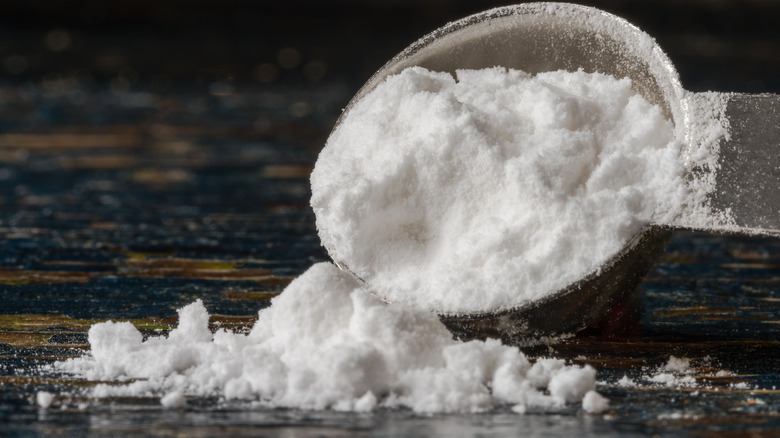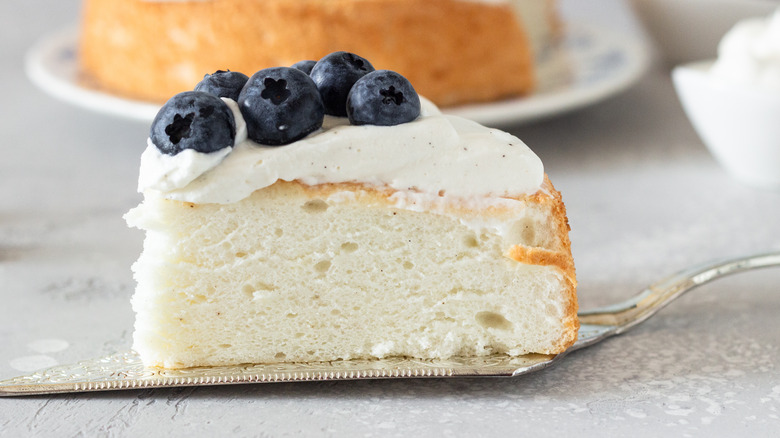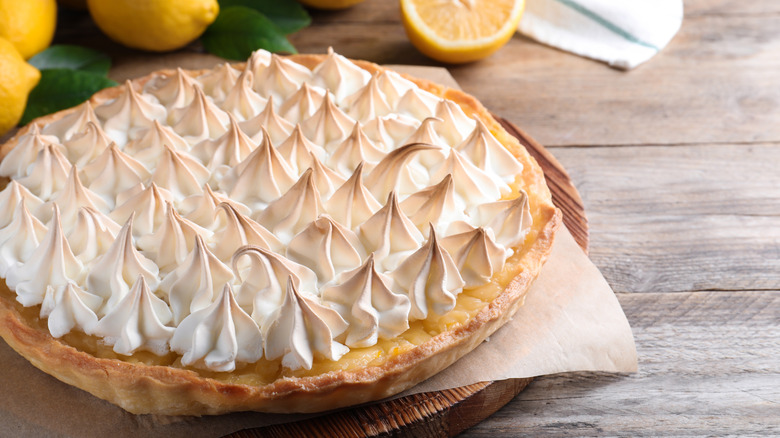Now We Know What Cream Of Tartar Is Actually Made Of
Many great bakers have a few specific ingredients in their pantry they swear by to help them achieve their delicious bakes. Cream of tartar frequently appears on the ingredient list for baked goods (like genoise cake, French macarons, or meringue cookies) that get their light, airy texture via whipped egg whites. If you've seen this ingredient and wondered what this ingredient is, don't worry, we've been there too.
Contrary to how the name sounds, the ingredient has nothing to do with tartar sauce or cream. Instead, cream of tartar is the conventional name for tartaric acid or a powdered dry acid salt that, when used in small quantities, is a confectionery powerhouse that helps egg whites hold their stiff peaks, creates chewy sugar cookies, and prevents clumps of sugar forming in homemade fudge.
That's what cream of tartar is and its purpose in baked goods, but how is it made? Cream of tartar is actually a byproduct of winemaking. Yes, another reason to love wine! Tartaric acid (potassium bitartrate, if you're using its scientific name) is naturally present in fruits like grapes, apples, and mangoes. In winemaking, little crystals (along with other wine compounds like tannins) form during fermentation. These crystals are then extracted, purified, and dried to form cream of tartar, a pantry ingredient that turns out to be quite useful in baking.
How the ingredient got its rise
Like most great inventions, cream of tartar got its start and rose to popularity because it met a need of the time. It was originally extracted from the winemaking process and used as a component of baking powder in the 1800s. When combined with alkaline baking soda to make baking powder, cream of tartar's sharp acidity activates the chemical leavening reaction, giving rise (literally) to conveniently tender and light homemade cakes. Most commercial baking powders now omit cream of tartar (using phosphates and sodium aluminum sulfate instead), but the ingredient is still used in a variety of other baking applications.
Most notably, it's used to make meringues, fluffy sponge cakes, as well as cookies and confectionery treats. Though you can't make cream of tartar at home (unless you happen to be a winemaker and a chemist), if you don't have cream of tartar on hand, you can often sub vinegar, lemon juice, or even buttermilk, using double the amount of cream of tartar called for. Just make a note that the flavor might be altered depending on the recipe. Once you do have a jar of cream of tartar, though, it will last you a long time, as the acidic ingredient isn't easy to spoil.
How to use cream of tartar in your bakes
With a better understanding of cream of tartar, you can use it effectively to make a number of other baked goods. It's useful for adding structure to whipped ingredients. Adding just a little cream of tartar, along with sugar, when whipping up egg whites will allow them to hold their shape, and the resulting meringue won't deflate and break as easily over time, leaving you with beautiful lemon meringue pie, baked Alaska, or Swiss meringue buttercream, for example. The ingredient also helps hold the air and structural stability when making homemade whipped cream.
You can also add a dash of cream of tartar when making salted caramel, butterscotch fudge, or sugar syrup glazes. The acid prevents sugar crystals from clumping as you heat sugar during the candy-making process. The same principle can be applied to cookies; cream of tartar can give snickerdoodles and sugar cookies their signature chewy texture while preventing surface browning.
Cream of tartar has an acutely sour taste, so it can also provide a nice subtle hint of tang in your recipes. When using cream of tartar, however, you don't need much — just a dash in a batch of cookies and up to an eighth teaspoon for every egg white when making a meringue. Be aware: If you add too much of the ingredient, it can make your bake taste metallic. Cream of tartar is incredibly useful in multiple baking applications, but too much of a good thing will (quite literally) sour your baking efforts.


